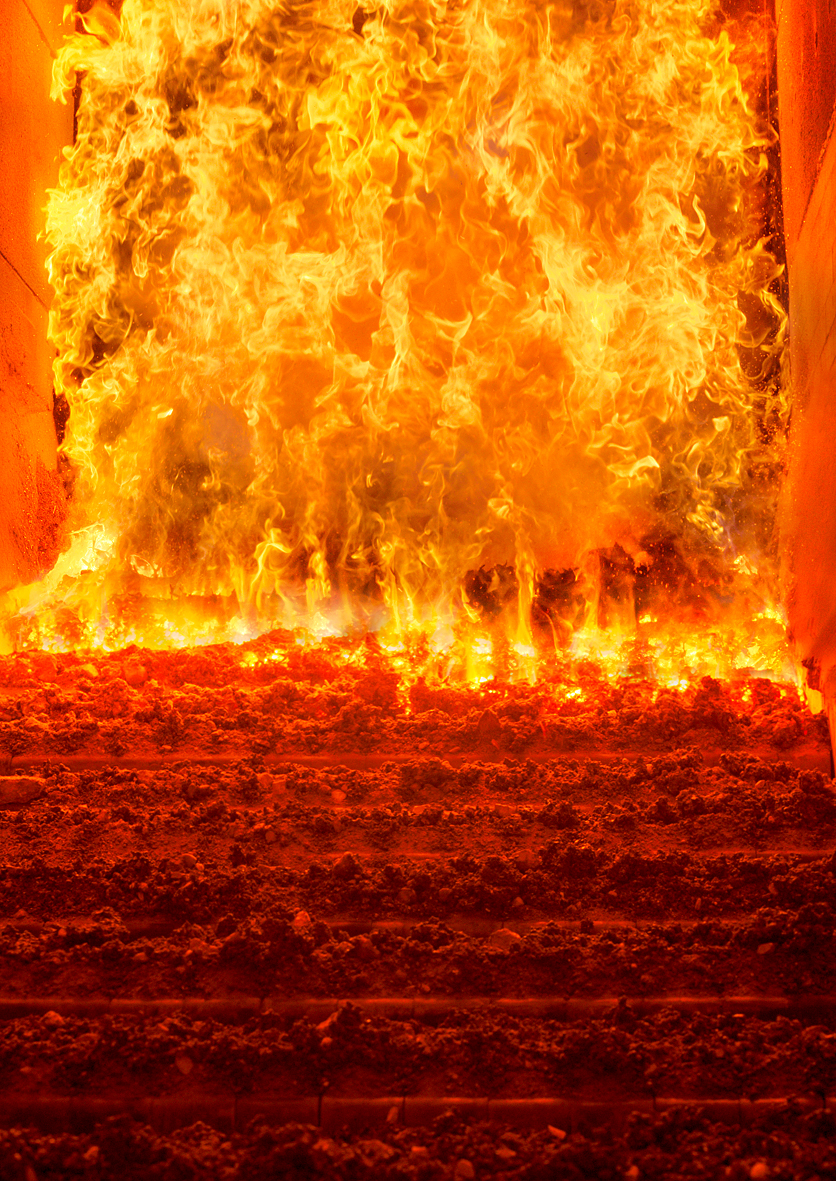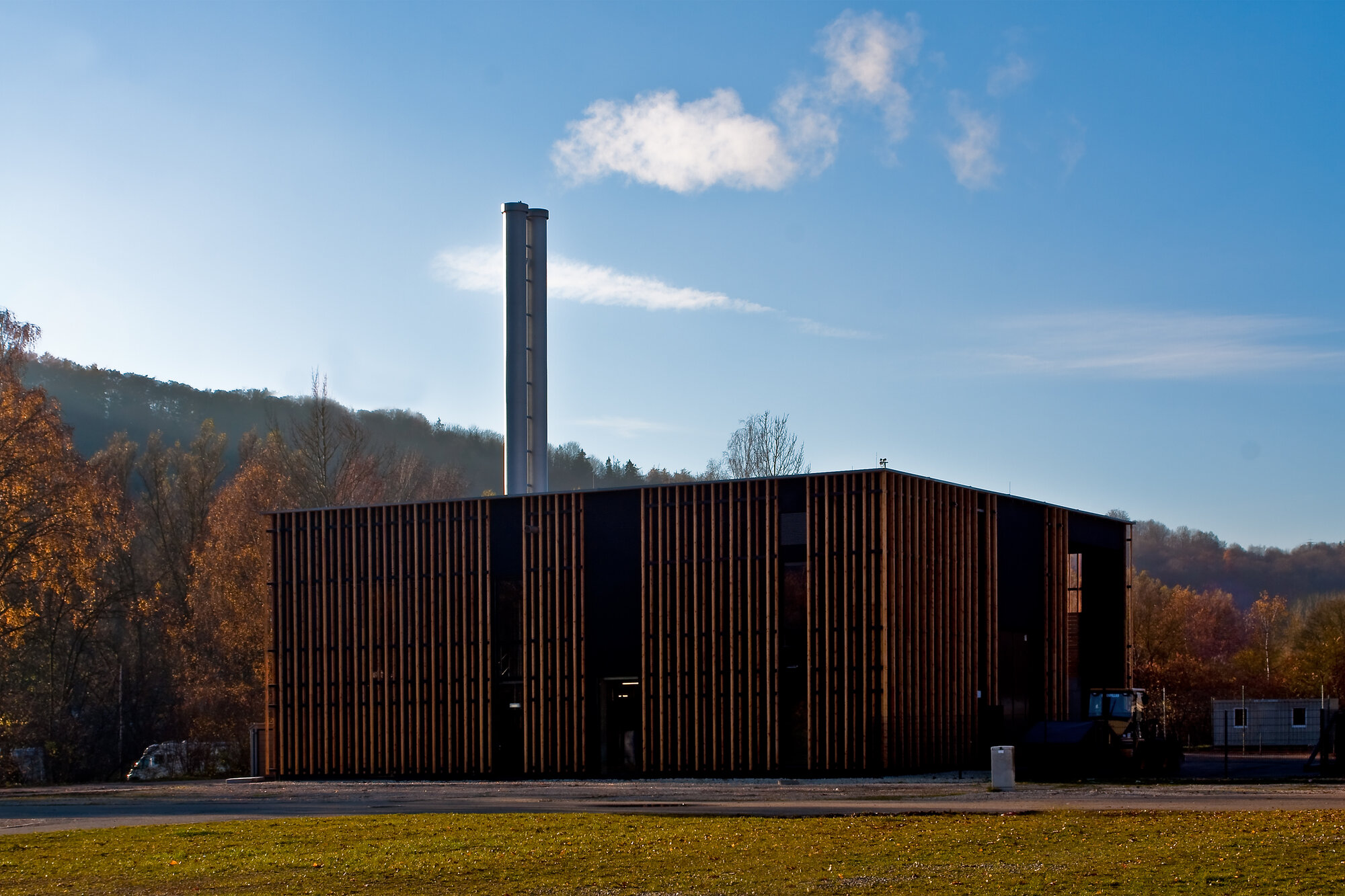A biomass heating plant is a heating plant that uses biomass as fuel. The heat generated is supplied to customers in the form of warm or hot water or steam via a heating network. Other heat transfer media such as thermal oil can also be used for industrial purposes. In contrast to the biomass power plant and the biomass cogeneration plant, no electrical energy is generated.

Firebox : Stair grate in partial load operation (Gammel Engineering)
If the system is located in the building to be heated, it is referred to as wood heating, wood chip heating, pellet heating, etc.
, depending on the fuelA biomass heating plant uses biomass as fuel, but otherwise does not differ in function from a conventional heating plant. Hot water or steam is generated centrally in a heating or steam boiler. Distribution takes place via local or district heating. Customers are large residential, commercial and administrative buildings or other consumers with a high demand for space or process heat (trade and industry) or other heat requirements (e.g. swimming pools). The advantage of centralized heat supply is that not every household needs and has to operate its own boiler. With decentralized heating (power) plants, technological progress, e.g. in efficiency or flue gas cleaning, can be used promptly, as investments only have to be made in one system and not in many in the individual buildings. This makes it possible to adapt to stricter legal requirements, e.g. under the Federal Immission Control Act (BImSchG), in a timely and comparatively cost-effective manner.
Today, biomass heating plants are usually built for the output range of 300 to 20,000 kW and have a fossil-fired breakdown and peak load reserve boiler for reserve purposes to cover peak loads. Larger plants, i.e. with a firing capacity of approx. 1,000 kW or more, are preferably built as (biomass) combined heat and power plants, in which combined heat and power is generated using cogeneration.

Biomass heating plant Eichstätt (Gammel Engineering)
A biomass heating plant always has its own structure and generally consists of the following plant components:
Fuel storage, fuel transport equipment (e.g. moving floor, screw conveyor, trough chain conveyor), boiler feed, combustion or fire chamber, heat exchanger with economizer, flue gas cleaning cyclone, electrostatic precipitator, chimney or stack, ash removal and ash container. With the Kombi Power System developed by Gammel Engineering, there is no need for complex flue gas cleaning and therefore no investment or operating costs due to the practically dust-free gasification of the fuel.Commonly used fuels are sawdust, sawmill residue, bark, wood chips, untreated residual wood and/or pellets.
The use of bioenergy, such as heat from biomass heating plants, is promoted by laws such as the Renewable Energy Sources Heat Act (EEG), as it has considerable ecological and economic benefits.Biomass heating plants are currently being built with a biogenic output range of between 100 kW and 5 MW. Smaller units are usually installed in the heat-consuming building, while larger units usually generate both electricity and heat as biomass CHP plants. The further development of the Organic Rankine Cycle process (ORC) can make electricity generation in heating plants (CHP plants) economical.
Power generation in biomass cogeneration plants is subsidized under the Renewable Energy Sources Act (EEG). Low-capacity plants in particular receive a feed-in premium on electricity that is fed into the grid.
There are more than 1200 biomass heating plants in Germany with a thermal output of more than 500 kW. Total bioheat from solid biomass in 2009 amounted to 95 TWh or 7% of the total market in the heating sector, with the market share having almost doubled in the previous five yearsSource : Wikipedia http://de.wikipedia.org/wiki/Biomasseheizwerk